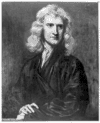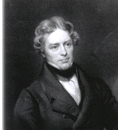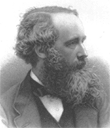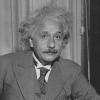Mysticism as a Key to Scientific Breakthroughs
By Owen Waters
Posted on February 6, 2023

Mystics are visionaries. That’s what gives them the edge in scientific research.
Newton, Faraday and Einstein were all examples of mystics. Most of their research occurred, not in a laboratory, but within their visionary consciousness.
Mysticism is a learned skill, just like learning to ride a bicycle, and it is an exact science. You can develop this incredibly useful skill and gain that visionary edge, not just in scientific research, but in any endeavor that you plan to undertake.
Mysticism is the act of going within. Our brains are entrained upon the external universe, which they perceive through the five senses. The act of going within means to withdraw from the exterior senses and allow inner perception to come forth.
It is a paradox that higher frequencies of consciousness are obtained by lowering the frequency of the brain. Brainwaves are electrical activity. The more the outer senses are slowed down, the slower the brainwave activity. Basically, we have to reduce outer-directed conscious activity in order to reach inner consciousness.
Higher consciousness is a frequency of mind, not a higher electrical brainwave activity. However, both consciousness and electric energy do resonate within the same universal magnetic field.
This primal, carrier field is the fabric of the universe. It is essentially a static magnetic fluid that fills all of space. It does not, however, appear static when viewed at the quantum level. Continuously fed by solar radiation, it appears as a hotbed of continual electromagnetic activity.
In her ground-breaking book The Field, Lynne McTaggart weaves together a compendium of how this primal, universal Field underlies virtually all phenomena in life. Every type of electromagnetic energy, including light, has its magnetic component. This magnetic component is the Field, the fabric of the universe.
Higher energies, in the form of etheric or life energy, also resonate in the Field just as electrical energy does. Furthermore, mental energies resonate in the Field and emotional energies resonate in the Field. The Field is the underlying link that allows all actions to play out in the universe. It is, as Lynne points out, the reason that the universe is a connected wholeness rather than a collection of isolated people and objects.
The Global Mind
The Field plays host to the mental/emotional atmosphere of humanity around the Earth. This global mind of humanity links us together. Every thought that you think, and every emotion that you feel, pass into the global mind and affect everyone else on the planet.
Who says that one person can’t have an effect in this world? We all have an effect, and if your effect is an inspired one, then it will inspire countless others around the world!
This global mind phenomenon also explains why scientific discoveries often pop up around the world in several places at once, even though the discoverers were not in physical communication. These discoveries are ideas whose time is right, so the thoughts circulate to those capable of receiving and interpreting their frequency.
Life Energy
The study of etheric energy, or life energy, is about to become a larger specialty of physics than electromagnetism. Lynne McTaggart’s book lists many manifestations of etheric energy, including healing energy, scalar waves, homeopathy, and acupuncture treatments of the human energy body.
Etheric energy is a pre-physical energy. Some would call it non-physical, yet it appears solid enough to people in the afterlife, or astral realms. Their “spirit” bodies, and the solid-looking articles around them, are made of etheric energy.
Because etheric energy is responsive to mental pressures, objects in those surroundings can be materialized and altered at will. According to out-of-body expert Robert Monroe, some newcomers to the afterlife get very excited about this ability to instantly create and modify thought-forms. So much so, that they redecorate their homes daily, using their minds to create any decor they can imagine! Such is the power of instant visualization, at least in the afterlife.
Moving back to the physical realm, another example of etheric energy is the substance of Rupert Sheldrake’s morphogenetic fields, which determine the shape-to-be of growing plants and animals. When we can more easily generate and measure etheric energy, then this new branch of physics will open and grow.
The practice of mysticism involves contemplation, which is a state of mind beyond concentration. When you study an object in front of you, you concentrate upon it. The state of concentration then allows insights from your intuitive faculty to enter the picture, so contemplation is a combination of concentration and intuitive insight. These intuitive insights come from the object of your attention because your mind has traveled into the object and acquired information about it.
Let’s say, for example, that the object of your contemplation is a subatomic particle, the electron. The nice thing about consciousness is that it can downsize its focus to the subatomic level. If you were to tune into such an actual subatomic particle, what would your impression be of its shape?
Would it be a sphere of solid matter? No, we already know that that is not possible because Einstein proved that matter is energy, and therefore its solidity is an illusion.
Would it be a point of electromagnetic energy? Yes, but what would be its shape? What would be its function as it interacts with the rest of nature?
What kind of motion would be present? Would it be an vortex of electromagnetism, spinning and radiating, speaking to all of the rest of Creation? Would it have an etheric template, like a morphogenetic field, acting as a waveguide as it continuously cycles between the Field and physical expression?
Intuitive insight is evolving from its former, dream-like status into the verifiable world of rigorous, scientific control.
The Early Days of Science
This is similar to the transition of another discipline, the one from alchemy to chemistry that occurred 300 years ago. That was the time of Robert Boyle, one of the founding members of the early scientific research establishment, The Royal Society.

Robert Boyle
1627-1691
In those days, there was little or no industry to fund scientific research, so King Charles II was approached to fund research into the wonders of those days, hence the name, The Royal Society. After Boyle published his magnum opus, The Sceptical Chemist, the vagueness of alchemy was shifted irrevocably into the precision of modern-day chemistry. All thanks to his intuitive insights.
If Boyle had not possessed a sound, intuitive grasp of the subject matter of alchemy, then he could not have extracted its potential for growth; the growth which became modern-day chemistry.
Isaac Newton was 15 years junior to Robert Boyle. After a difficult upbringing, Newton attended Cambridge University to earn his Bachelor’s degree and then trained in alchemy under Robert Boyle.

Isaac Newton
1643-1727
Michael White, in his biography of Isaac Newton, refers to Newton as an obsessive, driven mystic, deeply involved in alchemy and a subscriber to a “heretical” sect of Christianity, i.e. one with some ideas of their own. Newton spent a large part of his life intensely involved with alchemy, leaving behind over one million words on the subject. A mystic to the core, he also spent a considerable amount of time studying biblical prophecy, Rosicrucian mysticism, astrology and numerology.
White concluded that Newton’s search for the philosophers’ stone and for scientific fundamentals such as gravity are inextricably linked. Newton was a mathematical mystic, devoted to finding out how God had constructed the universe. He was an obsessive character who searched for an understanding of the universe by whatever means possible.
During his life, Newton headed the Royal Society (1691-1727), invented calculus, and gave us an understanding of gravity and light. He formulated the three laws of motion upon which all of mechanics is based and, famously, narrowly avoided being hit on the head by a falling apple.
Michael Faraday began his work in science researching chemistry, where he discovered benzene and succeeded in liquefying a number of gases. He soon moved ahead into the new and fascinating realm of electricity. Most of his colleagues doubted even the existence of “such a phantasie as electricity.” Surely, they said, there could be no serious connection between such diverse phenomena as lightning, static electricity, battery cells and electric eels?

Michael Faraday
1791-1867
While Faraday’s Victorian colleagues were, by comparison, unimaginative materialists, he proved to be a true mystic scientist. He actually saw, in his mind, a dance of energy in electromagnetic fields. In Faraday’s mystical vision, ahead of even today’s mainstream view, he saw matter as consisting of tiny electromagnetic fields. In his Experimental Researches in Electricity, he said “Each atom extends, so to say, throughout the whole of the solar system, yet retaining its own centre of force.”
With Volta’s invention of chemical batteries and their ability to produce a controlled current, laboratory experiments in electricity became much easier to perform. Prior to Volta’s chemical batteries, experimenters had used Leyden jars, which only stored a small charge of static electricity. Volta was later honored by having the unit of electrical potential, the volt, named after him. It is fortunate that the inventor of the Leyden Jar, Pieter van Musschenbroek, was not chosen for this, as we could have ended up today with houses wired, not for 115 or 240 volts, but for 115 or 240 musschenbroeks!
Faraday’s successful decoding of electromagnetic behavior led him to invent the transformer, the electric motor and the electric generator. Later, James Clerk Maxwell became his student and friend.

James Clerk Maxwell
1831-1879
Maxwell, another true mystic, could see the field structure of electromagnetism clearly in his mind’s eye. He went on to develop mathematical tools for calculating the behavior of electromagnetic fields. This enabled him to calculate the speed of traveling electromagnetic waves, which was – surprise, surprise – the speed of light. From this discovery, a realization unraveled that light was electromagentism.
Albert Einstein was another deeply mystical figure, one who had the vision to see that space and time are compressible. His realization that “solid” matter was really just energy, created a global paradigm shift.

Albert Einstein
1879–1955
Einstein said that, “The most beautiful emotion we can experience is the mystical. It is the power of all true art and science. He to whom this emotion is a stranger, who can no longer wonder and stand rapt in awe, is as good as dead.”
Einstein is also known for making statements such as:
“God does not play dice with the universe.”
“Religion without science is blind, and science without religion is lame.”
“The Field,” he even said at one point, “is the only reality.”
Perhaps the most mystical statement of all came from Michael Faraday who, referring to life in general, said:
“All this is but a dream.”
The practice of mysticism is the practice of going within. Any meditative practice will help you develop this skill and gain that visionary edge in any endeavor.
For the ultimate meditation, see the article, Infinite Being Meditation.
This article was written by Owen Waters, author of the Indie award-winning book, Spirituality Made Simple.
Owen Waters
Compiled by http://violetflame.biz.ly from:
Blog
Reminder discernment is recommended.
The Truth Within Us, Will Set Us Free. We Are ONE.
No Need of Dogmatic Religions, Political Parties, and Dogmatic Science, linked to a Dark Cabal that Divides to Reign.
Any investigation of a Genuine TRUTH will confirm IT.
TRUTH need no protection.
Question: Why the (fanatics) Zionists are so afraid of any Holocaust investigations?
Main Site:
EN http://violetflame.biz.ly
EN http://violetflame.biz.ly

No comments:
Post a Comment